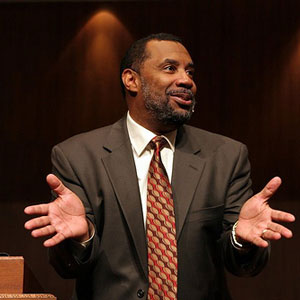The chapters we’re reading this week includes hard teaching, wonderful promises, and amazing miracles. And through it all you’ll see the ‘motif of misunderstanding’ on display (as Michael Card refers to it in his wonderful commentary “John: the Gospel of Wisdom”), as the Jewish leaders, the crowds, and even the disciples misunderstand who Jesus is, and how the glory of God is displayed.
You’ll note in chapter nine and eleven through the healing of the blind man, and the raising of Lazarus, Jesus introduces a new way of thinking about sickness and even death—that both can be a basis for the glory of God to be revealed.
The people of Jesus’ day assumed a cause and effect relationship between sin, sickness, and suffering. In chapter nine we discover that sometimes God chooses to display His power on the platform of our suffering. These chapters help us wrestle with the age-old challenge of trying to reconcile a good God and an evil world.
One other note about the blind man. We are more like him than we may think. We are called to ‘walk by faith, not by sight.’ The blind man was a literal demonstration of this when he went to the pool to wash his eyes. And his testimony following is the story of many of us: ‘I can’t explain it…all I know is once I was blind and now I see.’ My prayer is that you will see Jesus more clearly this week as you read through John chapters 7-13.
At the end of his eye witness account, the apostle John explains why he wrote his testimony—selecting the stories and events out of the countless illustrations and occurrences. He said, “these are written that you may believe that Jesus is the Messiah, the Son of God, and that by believing you may have life in his name.” (John 20:31)
For a great video message of these stories, check out Andy Stanley’s Bystander Series, part 5 and 6:











